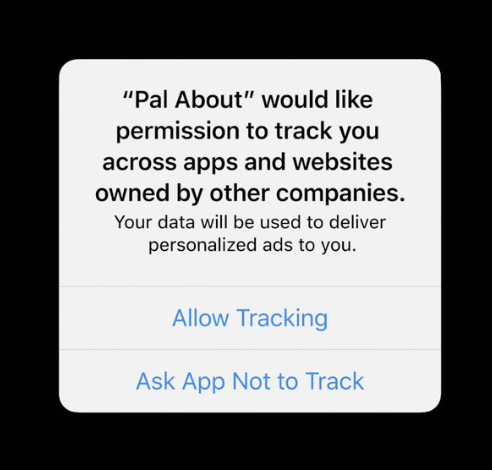By: Tom Murray | Managing Director
Earlier this month, Apple delayed their new privacy policy that was set to roll out for iOS 14. When this was announced during the summer, the entire advertising community was up in arms about the changes, thinking that it would be the death of mobile app advertising as we know it. And they may not be wrong.
Apple has always been a champion for privacy, with an entire marketing campaign based on privacy just last year. They are a stark contrast to other Silicon Valley giants such as Facebook, Twitter, & Google, who have all had their share of run-ins with privacy issues. Apple is the odd man out of that foursome however, in that those other three companies rely substantially on advertising revenue to thrive. Apple on the other hand, which at the time of writing was worth over $1 Trillion Dollars, does less than 5% of their revenue in advertising revenue. This makes them set up well to take a slight hit, gain a big PR boost for being a privacy advocate, all while hurting the other platforms from being able to effectively monetize their user base with ads.
The changes made are extremely technical in nature, but let’s take a simplified look into what those changes are, and why they will change the mobile app advertising landscape for years to come.
Major Change #1: Privacy Opt-in Required

When users download apps, they do not need to give consent currently to be tracked, and oftentimes this information is buried in the Terms of Service that no one actually reads. This allows the app to basically track every action and conversion event that they want to track.
This new popup window will need to show up almost directly after a user installs and opens the app. There is no concrete data on this yet, but it is expected that 80-85% of people will opt out of this tracking when given the choice. It is already around 33% for apps in general on the iOS ecosystem, and that is with buried privacy and ad settings in each app.
Major Change #2: IDFA Will be Deprecated
The IDFA, or Identification for Advertisers, is just a random string of characters that helps Apple know which device is which, and who converted on an ad specifically. This information functions like a social security number, in that it is unique to the device, so it can be tied directly back to a specific user through simple matching.
The IDFA is going be removed, effectively ending the ability to match a user back to a specific device with ease.
Major Change #3: Conversion Events are Timed
Apple has significantly reduced the conversion window from unlimited to just 24 hours. This means that for apps that have to wait days or weeks before their main conversion may happen, they may miss out on this key revenue conversion event.
Major Change #4: Campaign Limits
With the new Apple SkAdNetwork in place, there will be a limit of the number of campaigns you can run and have tracked. They have set this at 100 per network (i.e. Facebook = 1 network, Google = 1 network, etc), but platforms have already stated that they will allow even fewer campaigns due to the way the data needs to be stored. Facebook for example has come out and said they will only allow NINE campaigns to run in total.
Major Change #5: Conversion & Ad Limits
Due to the limited conversion types and values available, there will not be as granular data as most advertisers are used to. For example, Facebook won’t be able to show ad level performance data inside your mobile measurement partner (Adjust, Appsflyer, etc) anymore, unless your ad set only contains one ad in it. In addition, there will be a limit to the number of conversion events you can create, as well as which ones can have revenue attached.
These are the five biggest changes so far, but Apple has pushed these out till at least 2021, as many platforms were likely not ready for this change, and likely lobbied Apple for some more time. These changes, whenever they do go into effect, will greatly change the landscape of the mobile advertising business. This is because in order to determine a good placement from a bad placement, advanced measurement needed to occur in this nebulous world of app ads. Facebook, Google, etc make billions off of these types of ads each year, and this can put a big dent into that if marketers are not able to effectively monitor, measure, and optimize their campaigns.
